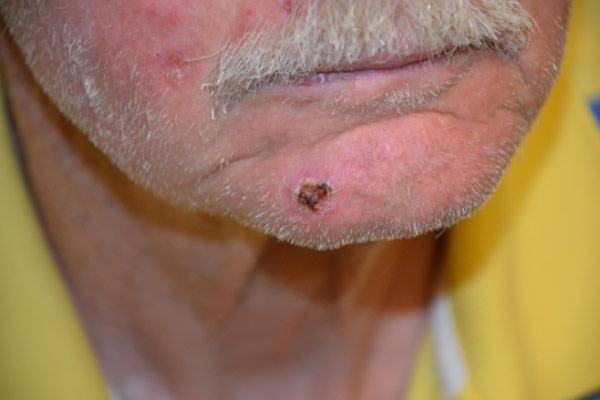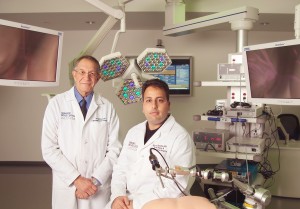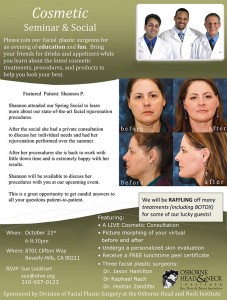- Folded Ear in Newborns: Treatment Options - April 11, 2018
- Newborn Ear Deformity: What Can Be Done? - April 11, 2018
- Ear Molding: An Overview - November 2, 2017
- Otoplasty for Protruding Ears - September 26, 2017
- Basal Cell Carcinoma: Facial Reconstruction Timing - September 26, 2017
- Clinical Considerations of Mohs Reconstruction of Cheek Defect - September 26, 2017
- Basal Cell Carcinoma: Nasal Bridge Reconstruction - September 26, 2017
- Skin Cancers Involving the Eyebrow: Clinical Considerations - October 3, 2016
- Treatment of Multiple Skin Cancer Lesions - June 1, 2016
- Skin Cancer: Nasal Reconstruction and Scar Management - June 1, 2016
Squamous cell carcinoma (SCC) is the second most common type of skin cancer, after basal cell carcinoma. Over 700,000 new cases of SCC are diagnosed per year in the United States. This form of cancer is potentially disfiguring and has a high potential for spread (metastasis) within the body, including the internal organs. SCC is highly preventable and also curable with early detection and treatment.

How can I recognize squamous cell carcinoma?
Squamous cell carcinoma commonly appears on areas of skin that are commonly exposed to sunlight such as the arms, hands, ears, and face. These lesions traditionally have the following appearances: large red patch that appears crusty or scaly; ulcerated lesion surrounded by elevated edges; or open sores that do not seem to heal. In addition, changes to existing lesions/moles may also indicate a potentially cancerous lesion. It is highly advisable that a qualified skin specialist promptly evaluate all suspicious skin lesions.
How does SCC form?
Excessive UV radiation from sun exposure or tanning beds is the main etiology of squamous cell carcinomas. UV radiation is damaging to a skin cell’s DNA and delicate cellular components. Repeated unprotected exposure to this radiation irreversibly damages the DNA repair mechanisms of these cells, causing them to reproduce uncontrollably, extending their lifespan, and promoting spread or metastasis from their original locations.
What are the risk factors for SCC?
Squamous cell carcinoma can appear in any individual that accumulates sufficient cumulative exposure to UV radiation. There are however various factors that increase the risk for development of SCC, including:
- Chronic sun exposure
- Tanning bed usage
- Extensive exposure to radiation
- Light colored skin or eyes
- Older age
- Infection with the Human Papilloma Virus (HPV)
How do I know if I have SCC?
The best way to know if you have skin cancer is to seek prompt evaluation by a qualified skin specialist. These specialists will typically biopsy your suspected lesion for closer examination under a microscope. Biopsy is the gold standard for skin cancer diagnosis. In addition, if the suspicion for skin cancer is high a specialist may also order a CT or MRI to evaluate for any spread to underlying structures.
How can I prevent SCC?
Taking preventative measures to minimalize UV radiation exposure is the main way to decrease your risk of squamous cell carcinoma. This includes staying out of the sun during hours of peak intensity. In addition, using sunblock of at least 30 SPF and protective clothing during sun exposure can help to prevent skin cancer.
How is SCC treated?
Squamous cell carcinoma can be treated with several different treatment modalities depending on the location, extend of spread, and size of the tumor. In addition, the patients overall health and comorbidities play a significant role in treatment. Treatment modalities include, curettage and electrodessication, surgical excision, Mohs micrographic surgery, chemotherapy, and radiation. A skin specialist is best suited to suggest an appropriate treatment choice given your specific case.
Why should a qualified skin specialist evaluate me?
A skin specialist is a highly qualified physician with decades of training and clinical experience. These physicians can diagnose and treat skin cancer while taking into account functional and aesthetic concerns.
During your evaluation by a skin specialist a detailed history is taken during which several risk factors and cumulative sun exposure is determined. Following the history, an examination includes inspection of the lesion in question as well as the rest of the skin to determine if any other subtle lesions are present. A biopsy is taken of any suspicious lesion and is sent for microscopic evaluation. If any biopsy is found to be positive for cancer, a skin specialist will typically order an MRI or CT of the suspected area to determine if there has been any spread to underlying structures.
The physicians of the Osborne Head and Neck Institute, Division of Skin, are double board certified in otolaryngology (ENT) and Plastic and Reconstructive Surgery. This rare combination of specialties affords the physicians of OHNI a rare perspective to address both the functional and aesthetic concerns of the patient.
To learn more about squamous cell carcinoma please contact the Osborne Head and Neck Institute.



